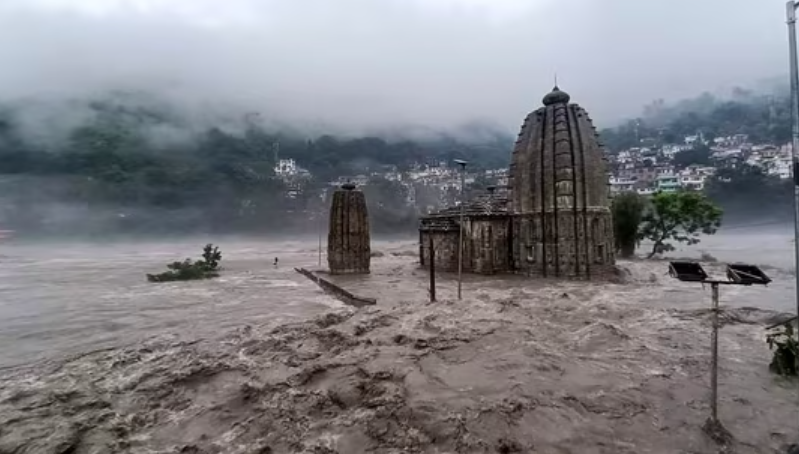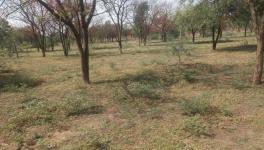Himachal Pradesh Needs a Commission of Inquiry to Produce a new Development Model

Image credit: PTI
In the Himachal dialect, there is a famous saying: "Nai baat nau din". This old proverbial wisdom signifies that the new issues remain relevant for only a few days (new talk lasts nine days). However, in the current period, new talks do not even last for nine days and are short-lived.
This saying finds relevance in the ongoing devastation of gigantic proportions happening in the northern states, particularly Himachal Pradesh and Uttarakhand. As the monsoon recedes in a few months, the memory of the disaster shall also fade away.
After all, the disasters hitting the mountain states are not new. Every year, there are gory stories of landslides, deaths, houses collapsing, flooding, and roads being washed away, among other things. Climate experts have repeatedly pointed out the change in weather patterns and its impacts on geographical locations. What is evident is that more rainfall occurs in a shorter period. This straightforward formulation implies that the Himalayan region will experience higher precipitation levels.
The severity of the devastation is not solely due to these increased levels of precipitation but also because of the planned development model, which can be referred to as the "planned devastation of the Himalayas."
The last few decades of developmental trajectory have seen an inverse of the 'mountain adapted model', or the model of 'developing along nature', as Ian McHarg had put it in his famous work, Design with nature, in the 1960s.
There are four major reasons for this kind of development model leading to massive changes in land use patterns. Urbanisation in the Himalayas is also occurring, but it is happening slowly.
Major Reasons
First, post-1990s, the central-state governments' partnership saw a dramatic shift. This shift took place not just in the economic sphere but also in how development must be carried out. The mountain states were not carved out because of economic reasons but because of peoples' aspirations of living in the mountains.
In Himachal, the model was quite interesting. To give a gist, this model was massive land reforms from the top, along with land distribution by the state government; this was compounded with a strong stimulus of state-led development of the social infrastructure. There was hardly any private capital.
So, in every nook and corner of the state, we saw a rapid transformation in health, education, animal husbandry, agriculture & horticulture, and massive unleashing of the electricity utility. By the 1980s, the state had wired electricity in every household. But all this was done by the strong stimulus from the state.
Post-90s, the Centre embarked on a path of opening up the economy and dramatic changes in the support provided to hill states. It argued that the states must manage their economies and development agendas. Natural resources must be utilised for enhancing the economic base along with a major shift in plan (development projects) and non-plan budgets (other government expenses).
The major natural resources were hydropower and cement production. The multilateral agencies, too, shifted their approach to large hydro dams. Since the state had hardly any financial capacity, the harnessing of the hydropower was done by many players-both private and public (mainly central PSUs).
Second, the other major resource is tourism. To sell tourism, the scenic picturesque beauty must be sold to the non-mountain resident. But their numbers matter. And hence more and more people are desired to visit the mountains all through the year. The previously constructed roads were insufficient, and thus started the widening of the roads, with single lanes being converted into two lanes and two lanes into four lanes.
The NHAI (National Highway Authority of India) took over most of the major mountain roads and started the widening work. The existing wisdom of cutting the mountains into terraces was ignored to speed up the construction. Instead, the mountains were cut, giving a vertical slit. The major devastation is in the two four-lane highways- Chandigarh to Manali and Chandigarh to Shimla. The strata will take years together, if not decades, to stabilise.
The geological studies were either not done or were not paid heed to. Some areas have sedimentary rocks, and cutting the mountain vertically in such stretches has further enhanced the region's vulnerability. The culpability here lies with the NHAI and the companies doing such work.
The state already receives more than 15 million tourists, and the population of Himachal Pradesh is less than 7 million. A town like Shimla, with a population of 200,000, got around 4.5 million tourists. The whole issue of mass tourism needs to be revisited.
Third, there is a seemingly quiet transformation in the agricultural and horticultural patterns in the state. Also, there is a visible change in the land holdings. The shift from conventional cereals to market-linked products is steering the village economy.
For such produce to reach the market, a motorable road is an inevitable necessity. Most of these roads are constructed by local contractors in consonance with the village communities. None of these roads meets the basic standards of construction. There are neither culverts nor drains on these roads. The muck extracted in the construction of such roads is dumped in the valley side all along the road. When it rains, this muck enters the small stream and rivulets finally in the river systems. It inflates the river to a very high volume along with muck. And the results are in front of all of us.
Four, urban land use is another planned disaster. The town and country planning department is responsible for preparing the master plans of the towns, both small and medium. There is a general formula adopted for the land use pattern. A certain FAR (floor area ratio) is decided arbitrarily without giving credence to the mountain slopes. Instead of zonal and sub-zonal mapping of the towns, there is a general FAR. The mountain towns are unlike the plains, where the surface is similar. Urbanisation, particularly the land use pattern, is frivolous without geological backing. There must be an exercise in the mountain towns on building typologies. The RCC (reinforced cement & concrete) material cannot be universally fixed.
All of this must be addressed now because there is a danger that key issues would be again ignored for 'business-as-usual'. This inertia must be broken and cannot be just done by the usual platitudinal behaviour.
Not to emphasise that in this rainy season, so far, 122 people have lost their lives. The state's 'robust' infrastructure, water supply schemes, power supply lines, and telecom system were majorly disrupted, and hundreds of families were rendered homeless, landless and penniless in Kullu Mandi, Solan, Kinnaur, Lahual-Spiti, and Kangra—the worst hit districts.
Why a Commission of Inquiry
The state government has been raising its voice over the damages so far. In a statement, the chief minister said the loss is around Rs 14,000 crore. There are different reports over the actual figure, which is difficult to assess in any case. So far, the state government is the only repository of making claims and will then be instrumental in giving relief if a relief package is announced.
The changes in mountain states, ecology, environment, economy, and ecosystem are systemic. These are linked to the systemic policy frameworks and their failures and the systemic failures of various departments subservient to people and their repository- the government.
Through a 'Commission of Inquiry', the state government can bring the largest stakeholder on board- the people. During Inquiry, people will get an opportunity to be part of their collective futures through collective participation. Whether the government considers implementing these findings or keeping them at bay is a separate matter.
Such a Commission of Inquiry must be headed by a retired supreme court judge, preferably someone from the state of Himachal Pradesh, along with a team.
Himachal Pradesh requires a major disruption for a sustainable and secure future.
This should impregnate the third policy paradigm of development, the two earlier ones being- the Dr YS Parmar model and the post-90s liberalisation model.
Without a new development model, the state is getting caught in a tangle with no way out.
Let this exercise begin with a Commission of Inquiry that can lay the foundation of a new beginning for the people and the state.
The writer is former Deputy Mayor of Shimla, Himachal Pradesh. The views are personal.
Get the latest reports & analysis with people's perspective on Protests, movements & deep analytical videos, discussions of the current affairs in your Telegram app. Subscribe to NewsClick's Telegram channel & get Real-Time updates on stories, as they get published on our website.
























